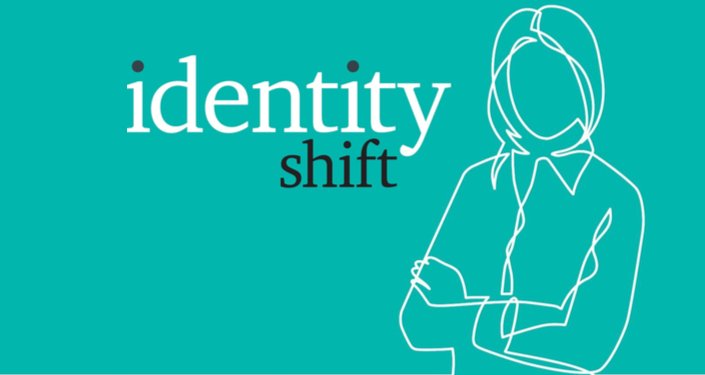More than 100 million job applications are made via LinkedIn each month. So, you need to do everything you can to build a strong profile. Here’s how.
Continue readingIdentity shift: secrets to successful career transitions
Switching careers is perfectly possible with the right plan in place.
Continue readingBeyond fulfilment: How to keep teams motivated
When employees reach a peak of self-fulfilment and growth, how do you help them to stay motivated? Could there be more to fulfilment than simply achieving personal bests? More importantly for managers and leaders, how does keeping your employees impact your business?
Motivated employees are undeniably valuable. Findings from IML ANZ’s latest National Salary Survey (NSS), show that keeping engagement and motivation levels up is vital. NSS respondents revealed that the single most important human capital challenge they believe would add the most value to their organisation is motivating employees (53%).
Compound that with the fact that the NSS shows a slightly upward trend in voluntary staff turnover. Moreover, what’s the top reason for leaving a job? Employees are looking for a new challenge (72%). So, keeping your teams motivated is not just about getting them to be their best; it is also best for your business.
However, when an employee has achieved much on their own, is it still possible to keep them challenged, excited about the work and motivated to do their best?
Here are some ways to achieve this:
Maslow’s sixth level of motivation
Most of us are familiar with Abraham Maslow’s hierarchy of needs. At the apex of the five-stage peak is self-actualisation or the realisation of self-fulfilment and peak personal achievements. What is not as widely known is that later in his life, Maslow added a sixth level to his hierarchy of needs – intrinsic values. This involves supporting a cause beyond individual success.
How to harness it: Leaders must help all employees, including high-achievers, to understand how they play a part in the greater purpose of the organisation. Who does your organisation help? How does it contribute to society? Keep them focused beyond self-actualisation to help them stay motivated.
The value of teamwork
Staying motivated after achieving much as an individual doesn’t mean high-performing employees won’t appreciate team-led wins. Never underestimate the power of collaboration and great working relationships between colleagues. As social beings, humans always enjoy the sense of working together to overcome an obstacle, reach a goal or even assisting each other when times are tough.
How to harness it: Encourage open communication between teams and within teams. Use technology to open up lines of communication by starting a team chat group. Help your employees get to know each other not just as colleagues but as people – develop real connections by organising social activities. Celebrate successes as a team too.
Empowering others
A sense of motivation can be sapped if one feels that they are held back from making decisions. To help keep good performers engaged, display trust in their abilities.
How to harness it: Let your team members make the call on decisions that they know best. Avoid crushing their motivation by making them feel they are powerless when it comes to their own projects.
By emphasising how they contribute to the organisation’s purpose, fostering a healthy team environment and empowering your team members, you’ll keep even the highest achievers motivated to give their best.
Sources:
- How to bring out the best in people: Five new insights
- Maslow: How to stay motivated once you’re fulfilled
IML ANZ Members can access these articles via Leadership Direct.
The need for greater trust in recruitment
By Kara Atkinson
In the digital era, fast-paced, competitive business environments reward those who are quick to respond to new opportunities and market challenges. Trust plays a vital role in the success of these initiatives, providing a cornerstone for building strategic partnerships, establishing a reputation, embracing digital transformation, and more.
Today, this once-stable foundation is crumbling under the pressure of royal commissions, and large-scale data breaches faced en-masse by organisations in every industry, and we’re quickly losing our footing. This sobering trend is made apparent in a new survey conducted by Harvard Business Review, in which nearly two-thirds (63%) of senior executives at large enterprises throughout the world stated that trust among people, businesses, and institutions has declined over the past two years. Further, after 20 years of research, the Great Places to Work Institute found that experiencing a high level of trust, between leaders and employees, is the primary defining characteristic of the very best workplaces.
The challenges
When looking at recruitment, if the process for joining a workplace is engineered through a broken vehicle, then trust is difficult to establish.
Leaders deal with subjective candidate vetting; their recruitment firm only shortlists the people on the market at that time rather than a shortlist of the best people.
On the other side, the candidate deals with unreturned calls, the black hole of resume submissions, and last-minute internal candidate competition and an emotional minefield of career guidance from short term relationships with inexperienced recruitment consultants.
The recruiter deals with outdated, generic job descriptions, usually supplied by their clients. The market is corrupted by over promotion of the same roles. Also, everyone competes in a time-stamped environment where speed wins over quality.
The environment
Hiring is never easy. According to a study by Leadership IQ, 46% of newly-hired employees will fail within 18 months, while only 19% will achieve unequivocal success. This lack of vision keeps companies from achieving the holy grail of business outcomes: Trust. This is what keeps teams drowning in a sea of mediocrity and what derails once-promising leadership careers. And this stops trust from developing.
Career ladders are long gone – where once a person signed onto an organisation at 21, followed the rules, were incrementally promoted along the way and retired with a gold watch. As companies have thinned out, leadership positions have disappeared, not to be seen again.
Career pyramids have replaced the ladders. The further up the pyramid people move, the hotter the competition for the top spot and the failure rates are staggering. Harvard Business Review puts the failure rate among management hires at 60% and the consequences of failure derail a once-promising career and cost the organisation time, money and trust.
The way forward
It is time for the recruitment industry to rewrite the rules of recruitment. Not just improve it, but, just as Uber did to the taxi industry, they need to transform and disrupt it. Every recruiter is an ‘expert non-transactional specialist with a proprietary search methodology who has access to deep global networks.’ Where is the recruiter who builds their business, and yours, on a foundation of competence, bespoke communication and trust?
Leaders must understand that a true employee value proposition is not only written in the first line of a job ad but is permeated through every touchpoint their prospective employee has.
Kara Atkinson is an executive recruitment expert with 18 years’ experience in helping people continue to build and transform themselves throughout their careers.
Why connection is the key to talent retention
By Michelle Sales
Think of the last time you had to deal with some kind of performance issue. Maybe an individual had stopped working cooperatively or seems less engaged in their work.
We think these individuals are being uncooperative or unreasonable, which leads to performance management to try and fix the issue.
This then spirals out of control: employee engagement continues to decline, performance issues become more challenging and the divide gets even larger, often leading to employee resignation or, worse, firing of potential talent.
The real issue here is not the individual themselves. It is the lack of connection that individual feels.
Studies show there is a connection deficit in workplaces today. For example, employee research completed by the Pew Research Center and the Ken Blanchard Companies reports 81% of people say their leaders don’t listen, and 36% rarely or never receive performance feedback, while 67% wish they did.
Most people, however, would rather leave a job than have a conversation to address a workplace issue. That’s a real shame – not to mention a real problem!
So what to do?
Digital detox
The ability to connect in our selfie-obsessed society has never been easier – at least online – so often organisations see the solution to strengthening connection as a technology issue.
Online tools like Yammer are implemented to try to make people converse and share more. Online conferences and ‘catch-up’ meetings are held across different time zones. Sure, many technology enablers are helping us to collaborate more effectively and connect differently.
In reality, though, these one-on-one meetings with people are really just a mechanism for managing work performance rather than getting to really know each other. For example, we prefer to use email to communicate rather than talking face-to-face or even by phone.
Technology is an enabler, but it is never the solution to a human issue. We must learn the art of cultivating real connections in our organisation to truly thrive.
Cultivate connection
Prolific author and researcher Brené Brown describes connection as ‘the energy that is created between people when they feel seen, heard and valued – when they can give and receive without judgment’.
When we feel a real sense of connection we trigger neurochemicals that make us feel good. Dopamine, oxytocin and endorphins give us a sense of wellbeing; they make us want to engage and work with others; collaboration happens and performance thrives.
On the flipside, when we experience disconnection, the reaction is as real as physical pain. Cortisol and adrenaline increase in our body, triggering the ‘fight’ stress response. This makes us respond to our environment as if it is hostile, like we’re out of place – which results in the behaviours and impact previously mentioned.
It’s a fact that companies that are voted ‘best place to work’ or an ‘employer of choice’ value and foster connection among their teams and organisations. As Sylvia Vorhauser-Smith, senior vice president of research at PageUp People, puts it, these companies are ‘meeting the more altruistic and basic human needs of feeling connected and being an important part in something bigger’.
Trust us
Hence, feeling connected and trusted to be and do our best is the ultimate human condition.
Employees are able to be their best possible self and feel valued and rewarded for this. They feel understood at an individual level and they are clear on the contribution they are making to the performance of the organisation. They love what they do and they connect to each other, their customers, leaders and the organisation in a very human way.
This is when you start to bring out the very best in people. This feeling of connection builds a critical foundation of trust in which your employees feel they can have a voice and can make a difference.
When employees are encouraged to connect, communicate and collaborate better, this leads to an increase in productivity, not to mention happiness. This, in turn, has a positive impact on performance, company loyalty, and of course, retention.
Michelle Sales is a highly sought-after speaker, trainer, coach and author who helps senior leaders and their teams to build confidence and maximise their leadership and performance by consciously connecting with others. She is the author of the new whitepaper The Connection Deficit: Why leaders must bring both head and heart to work to build trust, lift engagement and accelerate organisational results.
How to tackle unconscious bias in recruitment
By Clare Edwards FIML
When it comes to making decisions about people, we all like to think that we’re objective, fair and impartial. The reality though is very different because, if we have a brain, we are biased.
Unconscious bias (UB), also known as implicit bias, happens automatically, is outside of our control and is triggered by our brain making quick assessments of people and situations, influenced by our background, culture and personal experiences. The clue is in the word ‘unconscious’. When we are being biased, we aren’t aware of it as the brain can’t reflect at the same time as it’s making a mental shortcut decision.
UB impacts every area of decision-making in organisations including who gets hired, fired, promoted and demoted. It impacts leadership and team effectiveness, the treatment of stakeholders and ultimately, culture.
One of the most common unconscious biases in recruitment is affinity or similarity bias. This leads us to gravitate towards people who are like ourselves in appearance, beliefs, and background. We have an unconscious belief – “I prefer people like me over those who are different”.
When we were roaming the African savannah plains, out looking for lunch (or becoming lunch if we weren’t vigilant), different equalled dangerous, so we are programmed to consider people who are different to us as ‘foe’ before friend.
Unconsciously, when we first meet someone who appears different, (even for microseconds), our brain’s master error detector fires off subtle signals checking for safety, while consciously we are openly welcoming, curious and respectful.
Because most of our biases are unconscious, putting systems and processes in place can help to mitigate them. Awareness training can also work, but it is most effective when supported by a conscious effort to have a culture of diversity and inclusion where bias is challenged.
Here are four practical strategies for mitigating unconscious bias:
1. Challenge existing processes
When crafting job advertisements, apps like Textio can help managers avoid gender-biased language and ensure the vocabulary they use is inclusive, gender-neutral and not influencing candidates subjectively.
Software company Atlassian put Textio’s software to the test by reworking the way in which it worded its job advertisements. In just one year, the company increased the number of women being hired for technical positions by 80 per cent!
2. Minimise our ability to revert to affinity bias
In first-round selections, consider removing a candidate’s name, tertiary education experience and all other factors that don’t directly relate to the attributes you are seeking in a successful applicant.
In auditions for symphony orchestras, screens were put in place between the musicians and the interviewing panel (and female candidates were asked to remove noisy heels). This increased the likelihood that a female musician would advance to the next round by 11 percentage points. During the final round, ‘blind’ auditions increased the likelihood of female musicians being selected by 30%.
3. Re-think decision making
When we make a conscious effort to slow down and reflect on the drivers behind our decisions, we can uncover hidden biases. This is even more effective when executed in a group environment because we don’t challenge our own biases because we’re not aware of them!
Actively welcome differing perspectives in recruitment decisions; the people don’t have to be from the same department to help shine a light you might not see.
Being open to having our decisions respectfully challenged requires a culture of psychological safety. This supports us in becoming more open-minded, less judgemental and more flexible to changing our decisions based on the feedback we get.
4. Proactively drive inclusion
Having a diverse workforce brings benefits – and investing in, and focusing on, inclusion brings even greater success. It makes sense to want your employee base to culturally, racially and ethnically reflect that of your customers/ stakeholders and to have these people feel fully included.
- Encourage people to interact more with those traditionally outside of their ‘in-group’ to expand their awareness and appreciation of difference
- Team-based psychometric profiling tools such as Team Management Systems (TMS) and DiSC are extremely helpful. These provide an objective insight into preferences of self and others, our key differences and how we can harness differing strengths to make the whole greater than the sum of the parts.
Recruiting people is the most important and potentially costly decision that organisations will make. It makes sense therefore to invest energy, focus and time in ensuring that the people we hire feel valued and included members of our community from the outset and for the duration of their career with us.
Clare Edwards is the Principal of BrainSmart Consulting. She is also a speaker, facilitator and author. She studied the Neuroscience of Leadership – how knowledge of our brains can help us to be more emotionally intelligent and effective leaders and managers. Clare now helps people effectively manage and lead themselves and others in complex and uncertain business environments.
Doing more to beat unconscious bias
Keep an eye out for the next edition of IML ANZ’s quarterly print magazine, Leadership Matters, where Clare Edwards joins a panel of experts to delve deeper into unconscious bias and how to overcome it.
The future of the workplace is flexible
By Anthony O’Brien
‘Working nine to five’ for many of us old enough to remember is more closely aligned with the offices, factories, and workshops of the 20th Century. A phrase also popularised by singer Dolly Parton, working nine to five is giving way to the flexible working arrangements demanded and legislated for, in Australia and New Zealand today.
According to the 2018 Deloitte Millennial Survey, the three most essential elements millennials look for from a new employer are pay (51%), culture (57%) and flexibility (44%). With millennials set to make up 42% of the workforce by 2025, Charles Go MIML, Research Product Manager at IML ANZ, says, “Flexibility is becoming a very important topic and will be the norm in the future.” Go hosted an IML ANZ webinar, ‘Navigating the Future of Work’ in April examining the importance of flexibility, the gig economy and the skills managers need to navigate modern workplaces.
It’s worth reiterating that workplace flexibility is enshrined in Australian law through the Right to Request Flexible Work arrangements that form part of the National Employment Standards (NES). This right to request flexible working arrangements applies to permanent workers and casuals employed for 12 months or more.
Catherine Heilemann AFIML, director at the Salary Coach, explains, “There are some eligibility criteria for the Request Flexible Work arrangements such as being a carer, having a disability, being 55 or older, experiencing domestic violence, being a parent and so on.” In a past career at IBM, Heilemann was the first manager to have a virtual team with a mix of Australian employees working flexibly and outsourced workers in China and India.
FLEXIBLE IS BECOMING THE NORM
According to a June 2018 survey from recruiter Hays, the most common flexible working practices employers offer are flexible working hours and compressed working weeks (77%), part-time employment (75%) and flex-place arrangements, such as working from home or an alternative location (66%).
“Some employment situations lend themselves towards greater flexibility,” Heilemann says. “It’s tough for some workplaces to offer the kind of flexibility that companies such as IBM offer because they have people working on shifts and who must attend a location to perform their work.
“Doctors, nurses, teachers, railway maintenance specialists, factory workers and the like must attend their place of work to do their job.” Although, Heilemann says many shift workers can bid for their start and finish times. “This is a common practice with airlines. Moreover, workplaces allow for staggered shifts starts such as at Sydney Trains, with 6 am, 7 am, and 8 am starts at some maintenance depots.”
Billie-Jo Barbara CMgr FIML, Deputy Director of Workforce Planning at Charles Darwin University, adds that her former employer, the NSW Government takes the view of ‘if not, why not?’ She says this encourages employers and leaders to think beyond compressed hours and part-time work towards flexible strategies such as staggered starts and finishes. “This might even be about allowing an employee who currently takes two hours to commute each way in peak times to start later,” says Barbara. “Flexibility looks like a whole different range of things.”
ORGANISATIONS MUST ADAPT
Notwithstanding the pervasiveness of flexible working, the concept appears to have limited influence on recruitment and retention, according to the 2018 IML ANZ Staff Retention Report. When asked the main reasons for resignations, only 6.6% of surveyed organisations listed ‘lack of flexible work arrangements’ as a main reason, compared to 75.7% of organisations who listed ‘to seek a new challenge.’
Moreover, only 7.4% of those surveyed said a ‘lack of flexible start and finishing times’ were factors in resignations compared to 38.7% that listed ‘insufficient financial reward. Despite these findings, Heilemann maintains that if an employer isn’t offering flexible working arrangements in some form, “then they probably won’t be winning any prizes as a great place to work.”
Barbara says that trying to implement policies suitable to current and future workforces can be challenging for leaders trying to operate a profitable organisation. “I’ve noticed, for example, more millennials want a portfolio career at the start of their careers rather than the end.” A millennial herself, Barbara has already sat on several boards and been a coach, in tandem with her previous full-time role as a director of human resources with the NSW Department of Planning and Environment.
KEEPING YOUR BEST PEOPLE
Concerning staff retention, Heilemann equates flexible working arrangements with a bank account. “While you are depositing, things go well. Retention issues can relate to many things and offering flexible work arrangements to those who value it will add to the bank account.”
Go maintains that flexible working makes it possible for a diverse group of individuals to work for an organisation. “These arrangements support returning mothers and aged workers who need to work part-time or from home, as well as workers with health issues or disabilities,” he says.
Heilemann believes it is possible for older workers to undertake backfills to cover for employees on parental leave. “But for those who want to stay in the workforce, but not on a full-time basis, flexible working is a sensible option,” she says.
As with any change, maintaining the drumbeat on flexible work is crucial. “The IML ANZ 2016 Staff Retention Report found that only 3% of organisations lost staff to resignations because of a lack of flexible working arrangements. In 2018, this number doubled to 6%.
“At the moment, it is only a small percentage of employees who are linking a resignation to lack of flexibility,” says Go. “However, the concern is that both resignations and the desire for workplace flexibility is trending upwards. It’s crucial managers and leaders champion flexible working arrangements.”
IML ANZ itself celebrates the benefits of flexible work for people and organisations in a number of ways, including Chief Executive David Pich CMgr FIML being an ambassador for Flexible Working Day.
ROOM FOR IMPROVEMENT
An area Heilemann has identified for improvement relates to those leaders who don’t trust their employees with flexible work arrangements. “These leaders don’t necessarily discourage working flexibly but do not encourage it with real intent,” she explains. “I’ve seen leaders in recent times who talk flexible work, but the team says behind their back: ‘oh they don’t like it.’ This discourages people from asking for flexible working. To those leaders, I say: set the guidelines for flexible work. Then let your people have it. Be sure to lead and manage the outcomes, not the hours at the desk working away or pretending to work.”
Barbara subscribes to the view that many employees aren’t aware of the flexible arrangements on other. For example, when Barbara worked in a human resources role for the NSW Government she wasn’t aware of provisions for a career break. “And, I worked in human resources! It wasn’t until I moved to the NSW Department of Planning that I became aware this provision existed.
The conversation about workplace flexibility is not just about women working part-time continues Barbara, “But it is about taking a study break, or the opportunity to try a different career path. Successful workplace policies are dependent on the culture of an organisation and the willingness of employers to enable these policies.
“The smart employers have recognised the research that workplace flexibility will help attract and retain good people. For some organisations, there is a lack of awareness, while the incidences of employers deliberately denying these policies are in the minority now.”
The full version of this article originally appeared in the September 2019 print edition of Leadership Matters, IML ANZ’s quarterly magazine. For editorial suggestions and enquiries, please contact karyl.estrella@managersandleaders.com.au.
How to retain talent through learning and development
By Chris Burton
Increasingly, successful organisations understand that providing impactful development programs not only deliver performance benefits, it also provides a wonderful way to engage and retain staff who value learning and professional growth. But what does that look like in practise?
USE FEEDBACK TO INFORM DECISIONS
Many organisations use psychometric feedback tools as part of their professional or team development initiatives, for example, you might have a teamwork session that provides feedback about your team preferences or style. However, good feedback tools should be versatile enough that they can be re-framed to look at your work performance through multiple lenses and in multiple contexts. A learner might have good insights about how they work within teams, but what does the feedback tell them about their own individual work? Alternatively, the feedback might be great at helping an individual leader understand how to better collaborate with the different works styles of their teammates, but can it provide the entire team with reliable metrics to analyse their work processes?
To address how feedback informs our performance conversations, we can use a psychometric like the Team Management Profile (TMP) which was developed in Australia and used by more than two million people around the world. We know from the TMP worldwide database* that 51% of managers prefer to work in a systematic way on activities focused on immediate, tangible results. While that is not particularly negative, a problem arises when we compare the numbers of people who like to innovate and come up with new ideas (8%), or who like to focus on activities that ensure the sustainability of our work processes and organisational culture (2%). When we can understand the operational consequences of this disproportionate distribution of our work preferences, we can then make better decisions about our performance improvement strategies.
GENERATE ECONOMIES OF SCALE AND SCOPE
By extending the way that staff apply their learning to improve performance, we not only generate an economy of scale for the business, we also realise an economy of scope. The economy of scale occurs when we generate efficiencies by working with multiple people and supporting collaborative learning. The economy of scope occurs when we see that we reuse our learning resources to apply knowledge to other activities and contexts, providing us with the adaptability we need to compete in the 2020s.
Organisations keep their staff engaged with L&D initiatives by providing the workforce with new ways to apply and evolve their current knowledge in order to enhance how they work. And when the employees are increasingly capable of transferring their ideas into performance improvements, they achieve results more efficiently and contribute more to their teams. This, in turn, creates a multiplier effect, because when staff are generating good results in a continually improving, inclusive and results-focused environment, they are more inclined to be engaged and remain with the company.
FOSTER A LEARNING ATTITUDE
How do you promote your professional development initiatives internally? Do you shine a light on the opportunities your staff have to improve their performance? Do you help foster an attitude of learning transfer and continuous improvement? By making the effort to evaluate the performance impact that your training has on your team, you can highlight the benefits to your staff and stakeholders. And this, in turn, will engage, stretch and retain staff.
EQUIP YOURSELF WITH THE RIGHT TOOLS
Retention of key talent is always a hot topic for Australian managers. The Institute of Managers and Leaders Australia and New Zealand has a suite of diagnostic and development tools engineered to improve the ability of your organisation to retain talent and develop performance through improving self-awareness. If you would like to know more about the range of People Analytics tools available, please call 1300 362 631, email corporate@managersandleaders.com.au or visit managersandleaders.com.au/people-analytics
* Team Management Systems Research Manual (5th Edition), 2019. ITMS: Brisbane
Chris Burton is the Learning & Development Director, Asia-Pacific at Team Management Systems (TMS). He previously worked with Margerison and McCann for more than 20 years, is now an Executive Director and leads TMS’ Learning & Development Asia-Pac team as a programme facilitator and subject matter expert. An accomplished speaker and facilitator, Chris’s work spans from delivering keynotes at international conferences, to coaching boards and senior executives as well as delivering engaging, impactful workshops.










